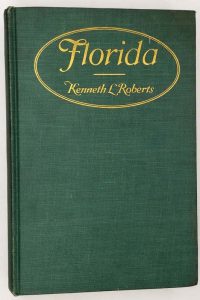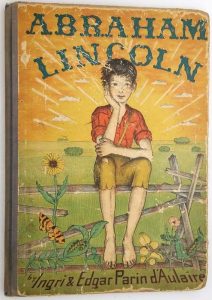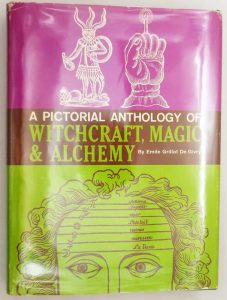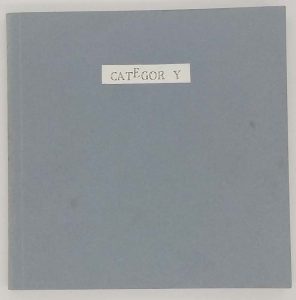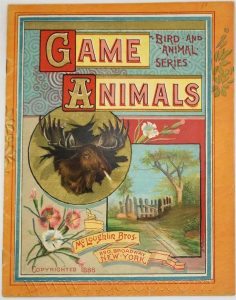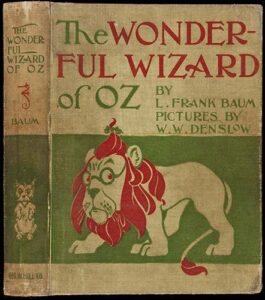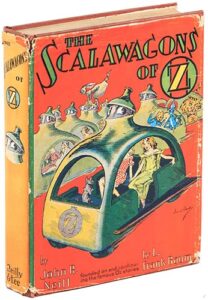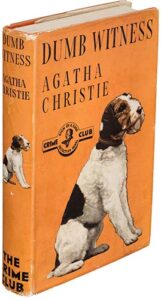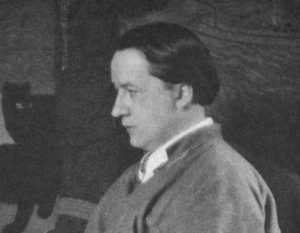The Hardy Boys books celebrated their Diamond Jubilee in the year 2002. The Hardy Boys Mystery Stories by Franklin W. Dixon is the first boys’ series in which the leading characters began as detectives, rather than drifting into it, as did earlier Edward Stratemeyer heroes such as the Rover Boys. Young people must have liked the concept, as the Hardys have lasted longer than any other set of juvenile series books, with the exception of the Bobbsey Twins books, which were meant for younger readers.
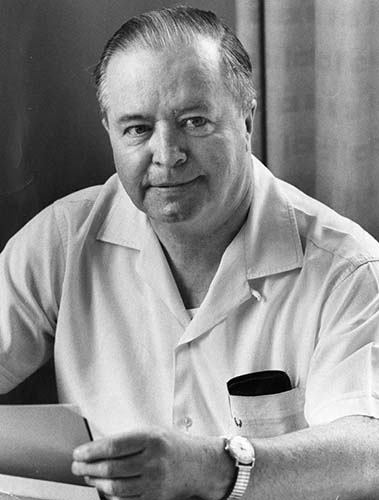
The books have changed vastly since their inception in 1927. Leslie McFarlane, the “ghostwriter” of the early Hardy Boys® books, spoke for all who remembered them when he Wrote this in his 1976 autobiography, Ghost of the Hardy Boys:
“The House on the Cliff… wasn’t merely a streamlined version of the other [story]. It was a different book from beginning to end. …They’ve been gutted… Those old books were well written. They had words you could roll around in your mouth and taste. They had funny scenes. They had scenes you could wallow in. …They had flavor. And now the flavor is all gone. (Page 209)”
A great part of my own aversion to the changes in the Older Hardy Boys books and my scorn of the newer, shorter mysteries is that I like things to be the way I remembered them in my youth, a common reaction. However, some of the changes are for the better, such as removing archaic slang and stereotyped descriptions of people of various ethnic groups, and even though the Hardy Boys® books are shorter and less detailed than they were many years ago, the revised mystery tales are still exciting to young readers. Contemporary readers also want to relax with heroes with whom they can identify.
I like the look and feel of the books with wrap-around dust jackets of the Hardy Boys I first read (the format of the 1950s) much better than the glossy picture cover books of today, or worse yet — the paperback ones. However, then the generation that came before me probably preferred their “thick” red and brown books with the white or yellow spines to the ones of my time. For all of us though, it is reassuring dial the adventures of Frank and Joe have lasted for such a long time. Not much else has. Leslie McFarlane (1902-1977), a writer from northern Ontario, did the first books in the series from Edward Stratemeyer’s and later his daughters’ outlines.
The McFarlane Hardy Boys books are Volumes 1 (1927) to 16 and 22 to 24 (1945). Many other ghostwriters finished the remaining “classic,” or Grosset & Dunlap, titles through Volume 58 in 1979, but the real authors were Syndicate outliners and editors. McFarlane was paid $ 125 for each early Hardy Boys book, as well as for his silence as a “ghost.” Leslie McFarlane also did the first four Dana Girls books for the Syndicate and worked on the Dave Fearless series, earlier books than the Hardy Boys’. No doubt it was McFarlane who set the “lone” and “style” of the Hardy Boys books, which other writers followed in all the years since the original edition of The Tower Treasure.
Much has been written about how unfair it was for the Stratemeyer Syndicate to pay low fees for its books and give no credit to the actual author. In the 1920s, $125 was about two months wages for a newspaper reporter who had to work even harder and write more words than would be found in a Hardy Boys book. Stratemeyer ghostwriters were furnished with detailed outlines for each book (more detailed than they wanted to admit), so they did not have to invent the complex plots. Many ghostwriters stayed with the Syndicate for twenty years or more, so the rules must not have been intolerable to them at the time. Producing juvenile series books was a business for the Stratemeyer Syndicate and the names of the “authors” on their books were the “house names” of that “brand” of book. The designers of toothpaste tubes or jumbo jets do not have their names engraved on the products they are paid to develop either.
The Classic Grosset & Dunlap Hardy Boys Books
The Hardy Boys books that are most sought by collectors are the hardback ones that were produced by Grosset & Dunlap from 1927 to 1979. In 1979 the Stratemeyer Syndicate took its books to Simon & Schuster (who later bought the Syndicate also). After a nasty court case, Grosset & Dunlap was left with the rights to print the first fifty-eight titles of the Hardy Boys® books (Canon), as well as the Nancy Drew and Bobbsey Twins books Grosset & Dunlap had issued before 1979.
Most Simon & Schuster Hardy Boys books are short, paperback ones, printed at the rate of about six a year since 1979. This study addresses the fifty-eight “classic” Hardy Boys’* books, although there are some collectors who are interested in the post-1979 books. Since even the Classic Hardy Boys” books were printed over a long period of time the entire history of them is too detailed for this book. The author strongly recommends a book that no collector of the Hardy Boys should be without: Hardy and Hardy Investigations by Tony Carpentieri and Paul Mular from Sinsine Press, now in its fourth edition. This book even tells how many words were in each Hardy Boys volume and how many times a character was mentioned in each one! The Hardy Boys cover pictures were done by the important children’s books illustrators of their time. Among them are Walter S. Rogers, who did covers for Honey Bunch, the X Bar X Boys and many other series books. A.O. Scott, J. Clemens Gretta and Paul Laune did several books each, as well as covers for other series books. Russell H. Tandy and Bill Gillies, who painted Nancy Drew dust jackets, did covers in the 1940s and 1950s. Rudi Nappi, another important Nancy Drew artist, did sixty-three picture cover designs, which is more than half of all Hardy Boys book covers.
The earliest Hardy Boys books have thick red bindings. Eventually these were brown bindings, which later became thin gray-tan composition bindings, and then picture cover books in various forms. There are 119 different dust jackets or picture covers for the Hardy Boys Classic set of fifty-eight volumes.
There are four charts that help explain the Hardy Boys books:
- Hardy Boys Books. This tells what year each book with a different cover design was first released.
- Hardy Boys Covers. This shows how the book was available in dust jacket/picture cover combinations.
The Hardy Boys Series List – Cover design variants
There are many different cover designs over the years. Dates of the changes and types are listed bellow.
- DJ: Just Jacket changes
- PC: Pictorial Cover changes
| Volume/Title | Year | 1. Cover | 2 | 2. Cover | 3 | 3. Cover | 4 | 4. Cover |
|---|---|---|---|---|---|---|---|---|
| 1. The Tower Treasure | 1927 | DJ | 1944 | DJ | 1959 | DJ/PC | ||
| 2. The House on the Cliff | 1927 | DJ | 1945 | DJ | 1959 | DJ/PC | ||
| 3. The Secret of the Old Mill | 1927 | DJ | 1944 | DJ | 1960 | DJ/PC | ||
| 4. The Missing Chums | 1928 | DJ | 1944 | DJ | 1959 | DJ/PC | ||
| 5. Hunting for Hidden Gold | 1928 | DJ | 1944 | DJ | 1960 | DJ/PC | ||
| 6. The Shore Road Mystery | 1928 | DJ | 1944 | DJ | 1960 | DJ/PC | 1964 | PC |
| 7. The Secret of the Caves | 1929 | DJ | 1944 | DJ | 1960 | DJ/PC | ||
| 8. The Mystery of Cabin Island | 1929 | DJ | 1944 | DJ | 1960 | DJ/PC | ||
| 9. The Great Airport Mystery | 1930 | DJ | 1944 | DJ | 1960 | DJ/PC | ||
| 10. What Happened at Midnight | 1931 | DJ | 1946 | DJ/PC | 1967 | PC | ||
| 11. While the Clock Ticked | 1932 | DJ | 1950 | DJ | 1962 | PC | ||
| 12. Footprints Under the Window | 1933 | DJ | 1950 | DJ/PC | 1965 | PC | ||
| 13. The Mark on the Door | 1934 | DJ | 1950 | DJ/PC | 1967 | PC | ||
| 14. The Hidden Harbor Mystery | 1945 | DJ | 1950 | DJ | 1962 | PC | ||
| 15. The Sinister Sign Post | 1936 | DJ | 1950 | PC | 1968 | PC | ||
| 16. A Figure in Hiding | 1937 | DJ | 1962 | PC | ||||
| 17. The Secret Warning | 1937 | DJ | 1962 | PC | 1966 | |||
| 18. The Twisted Claw | 1939 | DJ | 1962 | PC | 1969 | |||
| 19. The Disappearing Floor | 1940 | DJ | 1962 | PC | ||||
| 20. The Mystery of the Flying Express | 1941 | DJ | 1962 | PC | 1970 | |||
| 21. The Clue of the Broken Blade | 1942 | DJ | 1962 | PC | 1967 | 1970 | PC | |
| 22. The Flickering Torch Mystery | 1943 | DJ | 1962 | PC | 1971 | |||
| 23. The Melted Coins | 1944 | DJ | 1962 | PC | 1970 | |||
| 24. The Short-Wave Mystery | 1945 | DJ | 1962 | PC | ||||
| 25. The Secret Panel | 1946 | DJ/PC | 1969 | PC | ||||
| 26. The Phantom Freighter | 1947 | DJ/PC | 1970 | PC | ||||
| 27. The Secret of Skull Mountain | 1948 | DJ/PC | 1966 | PC | ||||
| 28. The Sign of the Crooked Arrow | 1949 | DJ/PC | 1970 | PC | ||||
| 29. The Secret of the Lost Tunnel | 1950 | DJ/PC | 1968 | PC | ||||
| 30. The Wailing Siren Mystery | 1951 | DJ/PC | 1968 | PC | ||||
| 31. The Secret of Wildcat Swamp | 1952 | DJ/PC | 1969 | PC | ||||
| 32. The Crisscross Shadow | 1953 | DJ/PC | 1969 | PC | ||||
| 33. The Yellow Feather Mystery | 1954 | DJ/PC | 1971 | PC | ||||
| 34. The Hooded Hawk Mystery | 1954 | DJ/PC | 1971 | PC | ||||
| 35. The Clue in the Embers | 1956 | DJ/PC | 1972 | PC | ||||
| 36. The Secret of Pirates' Hill | 1956 | DJ/PC | 1972 | PC | ||||
| 37. The Ghost at Skeleton Rock | 1957 | DJ/PC | 1966 | PC | ||||
| 38. The Mystery at Devil’s Paw | 1959 | DJ/PC | 1973 | PC | ||||
| 39. The Mystery off the ChineseJunk | 1960 | DJ/PC | ||||||
| 40. The Mystery off the Desert Giant | 1961 | DJ/PC | ||||||
| 42. The Viking Symbol Mystery | 1963 | PC | ||||||
| 44. The Haunted Fort | 1965 | PC | ||||||
| 46. The Secret Agenton Flight 101 | 1967 | PC | ||||||
| 48. The Arctic Patrol Mystery | 1969 | PC | ||||||
| 49. The Bombay Boomerang | 1970 | PC | ||||||
| 50. Danger on Vampire Trail | 1971 | PC | ||||||
| 51. The Masked Monkey | 1972 | PC | ||||||
| 52. The Shattered Helmet | 1973 | PC | ||||||
| 54. The Mysterious Caravan | 1975 | PC | ||||||
| 55. The Witchmaster's Key | 1976 | PC | ||||||
| 56. The Jungle Pyramid | 1977 | PC | ||||||
| 57. The Firebird Rocket | 1978 | PC | ||||||
| 41. The Clue of the Screeching Owl | 1962 | PC | ||||||
| 43. The Mystery of the Aztec Warrior | 1964 | PC | ||||||
| 45. The Mystery of the Spiral Bridge | 1966 | PC | ||||||
| 47. Mystery of the Whale Tattoo | 1968 | PC | ||||||
| 53. The Clue of the Hissing Serpent | 1974 | PC | ||||||
| 58. The Sting of the Scorpion | 1979 | PC |
Collecting Hardy Boys – Book Formats Identification Guide (simplified)
Note: The classic Hardy Boys books involve a complex formatting system. The following is simplified.
| Format | Year | Binding | Dust Jacket | Endpapers | Illustrations | Volumes |
|---|---|---|---|---|---|---|
| I | 1927-1932 | Red cloth | White spine | Blank | Glossy frontis | #1 - #11, including first printings |
| II | 1932 | Tan cloth | White spine | Brown Gretta | Glossy frontis | #1 - #11 |
| V | 1952-1956 | Tan-gray tweed. | Wrap Dust jackets | Orange and white Greta eps. | Frontis on plain paper; beginning with #34 also five internals | #1 - #36, including first printings, #31 - #36 |
| VI | 1957-1961 | Tan-gray tweed. | Wrap Dust jackets, including many reprints | Brown mulri-scene eps | Frontis and internals as in Format V | #1 - #40, including first printings, #37 -#40 |
| VIII | 1987- | Blue spine; glossy pictorial cover | N/A | Blank | Illustrations as in Format V | |
| III | 1932-1943 | Tan cloth | #12 white spine, after #13 yellow spine with heads of Hardy Boys logo; reprints have yellow spine and logo | Orange Greta | Glossy frontis, #1 - #15 and #17; plain frontis #16 and #18-#22. After late 1942 the paper is poor pulp/brown “War Paper” | #1 - #22, including first printings of #12 - #22 |
| IV | 1944-1951 | Tan composition, thinner books | Yellow spine Dust jackets through #24; wrap-around Dust jackets beginning with #25 | Orange and white Gretta | Earlier printings have glossy frontis; later #13, #14, #17 have no frontis; other later ones have frontis on plain paper | #1 - #30, including first printings of #23 - #30. Note: The 1945 printing of #24 (The Short Wave Mystery) has a maroon cover and eps. This is very rare. |
| VII | 1962-1987 | Blue spine; matte pictorial cover | N/A | - Brown multi-scene eps #1-#50 - 1962-1972: B/W multi-scene #1-#58 - 1972-1979: Crude, B/W double-oval eps | Illustrations as in Format V | #1 - #58, including first printings of #41 - #58 |
Reference:
- All About Collecting Boys’ Series Books. John Axe, 2002.
- Hardy and Hardy Investigations by Carpentieri and Mular.
